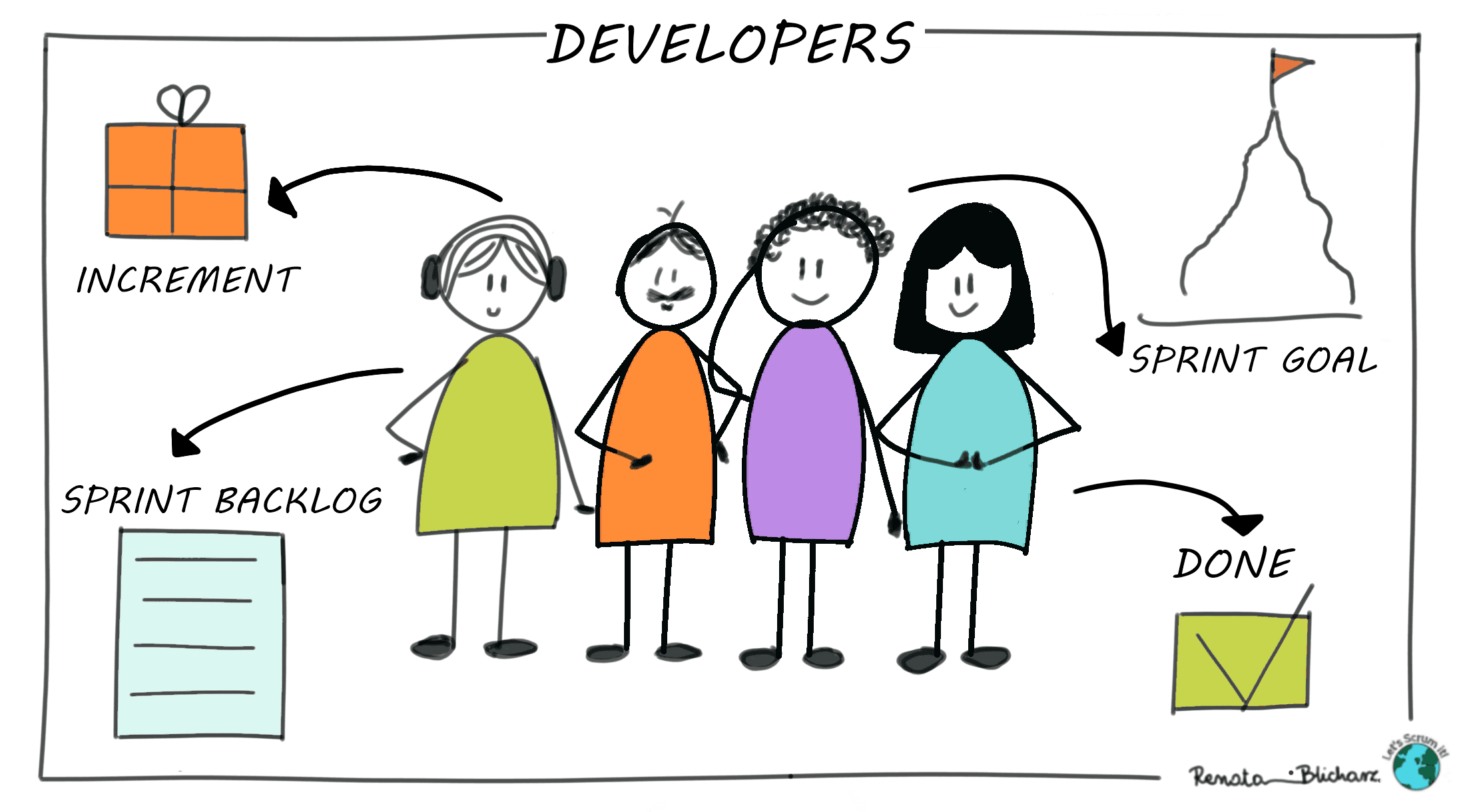
Scrum Roles #1 Development Team
July 2, 2020 • 6 min to read
Would you like to know who is in the Development Team and what are respnsibilities of the team? Check out this post to find out more.
Table of Contents
Introdution
Last month, I explained to you in detail all Scrum Events: Sprint, Sprint Planning, Daily Scrum, Sprint Review and Sprint Retrospective.
Today, I would like to start a new series about Scrum Roles. You probably think that you can read about Scrum Events and Roles in the Scrum Guide and there is no need to write posts about them. But I believe that practical knowledge and deep explanation of terms used in the Scrum Guide is important to understand the Scrum framework.
First posts on this blog are written to create the foundation for all interesting discussions about Scrum and Agile. Without solid basics this framework doesn’t work properly.
Scrum Team
To explain the Development Team role, I need to start from the broad context. In the Scrum all roles are part of the Scrum Team. Based on the Scrum Guide:
The Scrum Team consists of a Product Owner, the Development Team, and a Scrum Master. Scrum Teams are self-organizing and cross-functional.
Self-organizing?
Oh wait! Don’t they need any manager? Yes, that’s right. Self-organizing team doesn’t need to be managed by someone outside the team. The team knows the best way to organize and accomplish their work.
Cross-functional?
What does it mean? It means that together in a team, they have all skills required to do the work. They don’t need to depend on others who are not part of the team. To make their work even more effective, the Development Team should aim for spreading the knowledge in the team. It can be achieved by practices like pair programming, learning at lunch events or changing the facilitator on each Scrum Event. The above attributes of the Scrum Team increase productivity and flexibility of the team. What is more, Scrum Team inspired by their own autonomy is more creative and delivering complex products is much easier for them.
Who is part of the Development Team?
Great, we know that the Development Team is one of the roles in the Scrum Team. Let’s check in the Scrum Guide who is part of the Development Team:
The Development Team consists of professionals who do the work of delivering a potentially releasable Increment of "Done" product at the end of each Sprint.
In the Development Team you can find everyone who gets product development work done. I will list examples from software development, but remember that Scrum can be used in any other industry.
If we develop software products, Development Team can consists experts in:
- Software Engineering
- Designing
- Testing
- Software Architecture
- Business Analysis
- And everything else what is required to get things done.
What is the size of the Development Team?
Based on the Scrum Guide:
Optimal Development Team size is small enough to remain nimble and large enough to complete significant work within a Sprint.
Size of the Development Team should be from 3 to 9 people. Smaller teams will be less productive and they can struggle with delivering the increment. On the other hand, a bigger team increases complexity what can cause communication and collaboration issues. Scrum Master and Product Owner are not part of the Development Team unless they also do the work from the Sprint Backlog.
What are the atributes of the Development Team
The Development Team as a part of the Scrum Team needs to be self-organized and cross-functional. They decide what is included in the Sprint Backlog and how they will achieve the Sprint Goal that they planned.
The most important for the team is delivery of the releasable increment of "Done" product at the end of each Sprint. They create the definition of "Done" and decide how it will be verified.
The Development Team should consist of people with the right skills to be able to effectively organize their own work and deliver the product increment.
Based on the Scrum Guide:
Individual Development Team members may have specialized skills and areas of focus, but accountability belongs to the Development Team as a whole.
It is crucial for the team to remember about and support each other and collaborate effectively in order to achieve their goals.
![]()
Titles and sub-teams in the Development Team
Based on the Scrum Guide:
What does it mean in reality?
It means that the Development Team should work together without anything like titles or sub-team what could divide them. During Sprint Planning they need to estimate work considering all skills and knowledge in the team. If there are less experienced people in the team, others should teach them and help to develop all necessary skills.
Responsibilities of Development Team
What is the Development Team Responsible for?
Getting things Done
Development of releasable increment of product
Planning their work on the Sprint Planning meeting
Sprint Backlog - it can be adjusted after agreement between Development Team and Product Owner
Achievement of the Sprint Goal planned for the Sprint
Managing their work daily, planning and inspection during Daily Scrum
Demonstration of "Done" work during Sprint Review
Analyzing their work, relationships and processes during Sprint Retrospective. They need to inspect and adapt if needed
Continues improvement of their work and processes.
![]()
Summary
To summarize, the Development Team is responsible for "Done" work in the Sprint and "How" it will be done. As a self-organizing and cross-functional team, they find the best solutions to deliver the product effectively. They inspect their work and adapt to achieve better results, but also to increase creativity in the team.
They need to be transparent in all their actions to build trust and respect in the team and create a safe environment for every team member.
Would you like to read more about education?
Sign up for the Newsletter & join Let's Scrum it community!